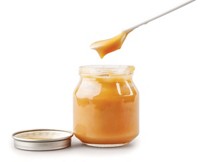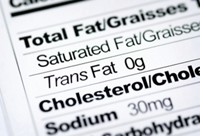Advertisement
Grab your lab coat. Let's get started
Welcome!
Welcome!
Create an account below to get 6 C&EN articles per month, receive newsletters and more - all free.
It seems this is your first time logging in online. Please enter the following information to continue.
As an ACS member you automatically get access to this site. All we need is few more details to create your reading experience.
Not you? Sign in with a different account.
Not you? Sign in with a different account.
ERROR 1
ERROR 1
ERROR 2
ERROR 2
ERROR 2
ERROR 2
ERROR 2
Password and Confirm password must match.
If you have an ACS member number, please enter it here so we can link this account to your membership. (optional)
ERROR 2
ACS values your privacy. By submitting your information, you are gaining access to C&EN and subscribing to our weekly newsletter. We use the information you provide to make your reading experience better, and we will never sell your data to third party members.
Environment
FDA Allows Irradiation Of Lettuce And Spinach
Critics fear rule will reduce nutritional value of food, hinder efforts to improve unsanitary practices
by Britt E. Erickson
August 27, 2008

In the wake of numerous outbreaks of food-borne illness over the past two years, the Food & Drug Administration announced last week that it will allow the irradiation of iceberg lettuce and spinach to kill bacteria such as Escherichia coli O157:H7 and Salmonella enterica. The food industry and Congress welcomed the move, but some food safety experts warn that the technology will rob food of essential nutrients and create a disincentive for growers and food handlers to clean up their acts.
Since 1999, FDA has been considering a petition from a coalition organized by the Grocery Manufacturers Association to allow irradiation—zapping food with low levels of ionizing radiation—of fresh produce and other ready-to-eat foods. "After letting a petition that would allow irradiation on fresh fruits and vegetables to languish for more than eight years, I am happy to hear that FDA has finally acted and approved irradiation for use on fresh lettuce and fresh spinach," said Rep. John D. Dingell (D-Mich.), chairman of the House Energy & Commerce Committee. Dingell urged FDA "to take quick action and approve irradiation for use on other fresh produce and ready-to-eat foods."
In the U.S. irradiation is used primarily on ground beef, poultry, and spices. It can also lead to significant reductions of pathogens in produce, depending on the dose of radiation, Suresh Pillai, director of the National Center for Electron Beam Research at Texas A&M University, tells C&EN.
FDA's new rule allows up to 4 kilograys (kGy) of ionizing radiation on fresh lettuce and spinach. That amount is enough to also kill many viruses, Pillai notes. His group is currently determining the lowest dose needed to destroy food-borne viruses such as norovirus, hepatitis A, and polio. "We are trying to reduce the dose because it makes the process cheaper and takes less time," he says. "Even at 1.5- or 2-kGy doses, you can achieve safe products."
Some food safety experts, however, aren't convinced that irradiation of fresh produce is a good idea, emphasizing that the technology will distract attention from unsanitary conditions and decrease levels of some nutrients. "Irradiation is no substitute for measures to clean up the huge animal operations that pollute our waterways and irrigation water with the raw manure that often carries pathogenic bacteria," said Bill Freese, science policy adviser at the nonprofit Center for Food Safety, in a statement. According to Freese, scientific studies have shown that irradiation can dramatically lower amounts of nutrients, such as vitamin A and folate, both of which are found at high levels in spinach.
FDA acknowledges that irradiation does lead to the loss of some vitamins, but the agency concludes in a Federal Register notice that a maximum dose of 4 kGy on fresh spinach and iceberg lettuce "will not have an adverse impact on the nutritional adequacy of the overall diet."





Join the conversation
Contact the reporter
Submit a Letter to the Editor for publication
Engage with us on Twitter